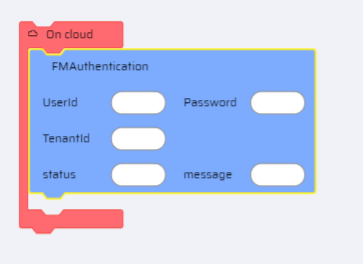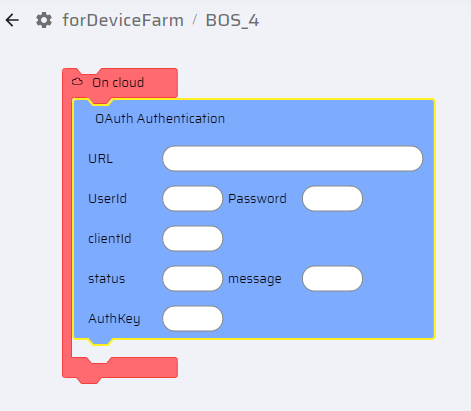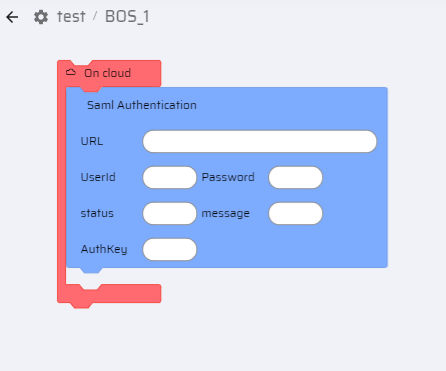The Authentication blocks are used when the admin needs to establish custom authentication processes to validate a specific group of end-users, distinct from the standard user base, within the Edgeready platform or to other systems, databases, and APIs. These particular end-users may possess varying levels of access rights or require authentication based on specific conditions. In such scenarios, the admin creates a custom Business Object Service (BOS) equipped with the necessary authentication blocks, enabling access for these users.
The following types of authentication blocks are available in the Integration Builder:
(To read about each authentication, refer the Authentication section.)
- FM Authentication
- Oauth Authentication
- SAML Authentication
- SAP Authentication
The functionality of these blocks are the same as the authentication settings configured in the Administration > Authentication section. The only difference is that these blocks are used within a BaaS service, the service is then selected under Administration > Authentication > Custom Authentication
Authentication Blocks Description | Authentication Blocks on Canvas |
|---|---|
FMAuthenticationThe user must enter the following details by adding variables to each field:
|
|
OAuth AuthenticationOauth Flow: The EdgeReady platform initiates the OAuth flow by requesting a temporary token from the OAuth server. This request includes input parameters such as:
The OAuth server validates the user's credentials and ensures that the EdgeReady platform is authorized to access the requested resources. If successful, the server generates the following output parameters: AuthKey: The access token that is sent back to the EdgeReady platform. The platform includes this access token in its requests to access protected resources. The OAuth server verifies the access token and allows or denies access to the requested resources based on the token's validity and the user's permissions. Status: Indicates the status of the authentication process. Example: Success or Failure Message: Provides additional information or error messages related to the authentication attempt. |
|
SAML AuthenticationThe user must enter the following details by adding variables to each field:
|
|
SAP AuthenticationThe user must enter the following details by adding variables to each field:
|
|



